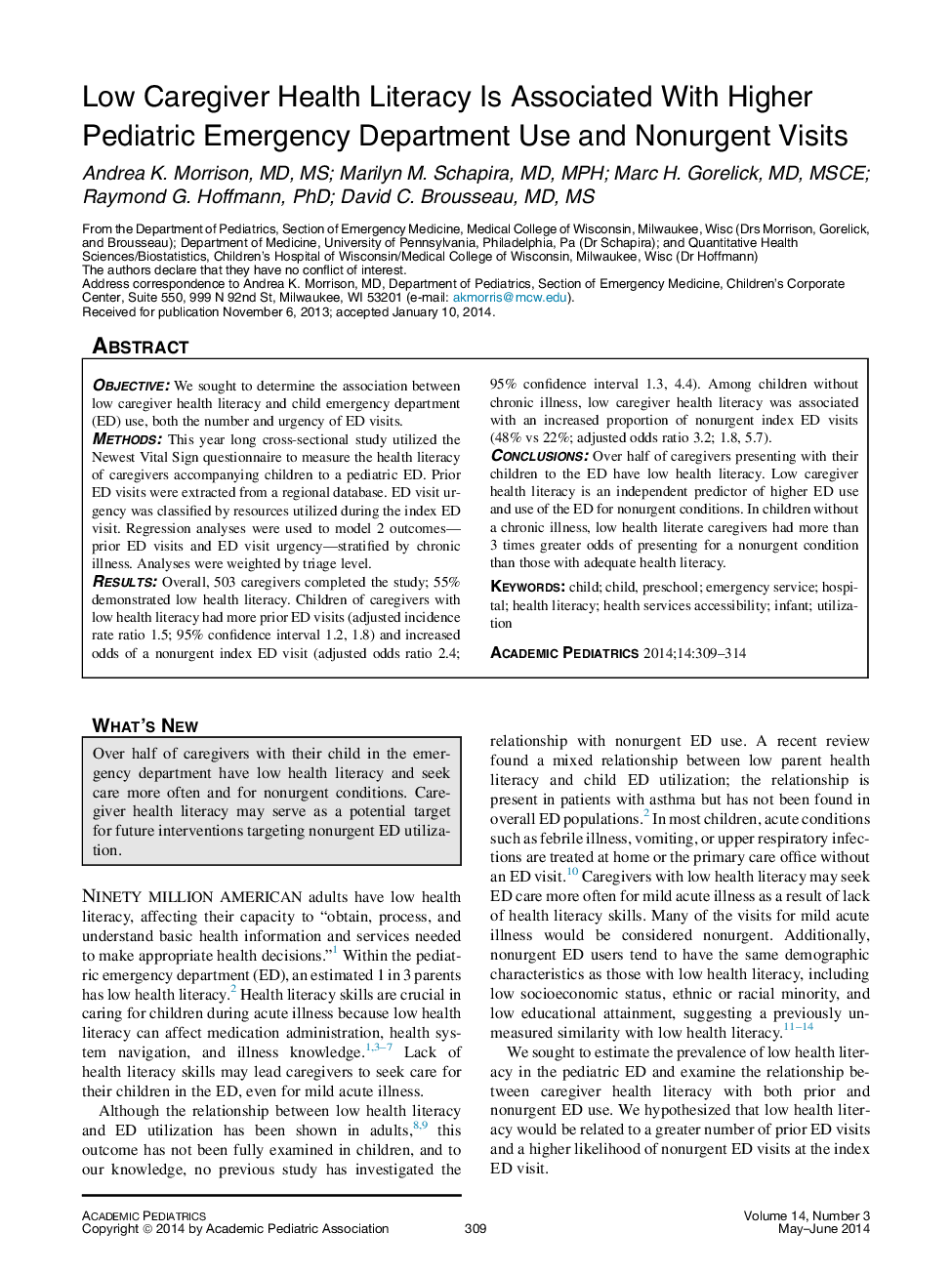| Article ID | Journal | Published Year | Pages | File Type |
|---|---|---|---|---|
| 4139375 | Academic Pediatrics | 2014 | 6 Pages |
ObjectiveWe sought to determine the association between low caregiver health literacy and child emergency department (ED) use, both the number and urgency of ED visits.MethodsThis year long cross-sectional study utilized the Newest Vital Sign questionnaire to measure the health literacy of caregivers accompanying children to a pediatric ED. Prior ED visits were extracted from a regional database. ED visit urgency was classified by resources utilized during the index ED visit. Regression analyses were used to model 2 outcomes—prior ED visits and ED visit urgency—stratified by chronic illness. Analyses were weighted by triage level.ResultsOverall, 503 caregivers completed the study; 55% demonstrated low health literacy. Children of caregivers with low health literacy had more prior ED visits (adjusted incidence rate ratio 1.5; 95% confidence interval 1.2, 1.8) and increased odds of a nonurgent index ED visit (adjusted odds ratio 2.4; 95% confidence interval 1.3, 4.4). Among children without chronic illness, low caregiver health literacy was associated with an increased proportion of nonurgent index ED visits (48% vs 22%; adjusted odds ratio 3.2; 1.8, 5.7).ConclusionsOver half of caregivers presenting with their children to the ED have low health literacy. Low caregiver health literacy is an independent predictor of higher ED use and use of the ED for nonurgent conditions. In children without a chronic illness, low health literate caregivers had more than 3 times greater odds of presenting for a nonurgent condition than those with adequate health literacy.
